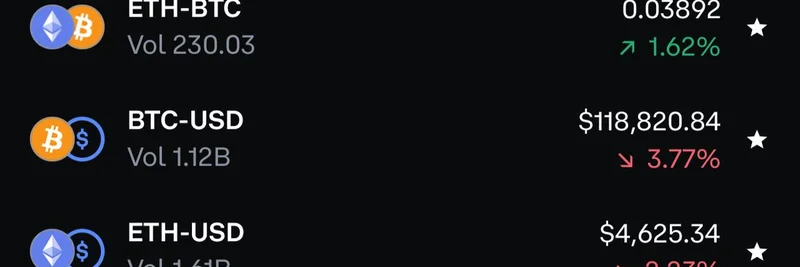In the fast-paced world of crypto, shifts in market dynamics can signal big changes ahead. A recent tweet from Vivek Raman, known as @VivekVentures on X (formerly Twitter), highlights a potential turning point for Ethereum (ETH) relative to Bitcoin (BTC). Raman, a former Wall Street trader turned crypto enthusiast, pointed out that during recent macro selloffs, ETH has traditionally lagged behind BTC. But not this time.
"The winds are changing," Raman tweeted. "The last few years during macro selloffs, ETH has underperformed BTC. Today’s selloff: the start of secular Ethereum outperformance. The winds are changing. Pay attention to ETHBTC."
This observation comes on the heels of impressive data shared by Ethereum advocate Anthony Sassano (@sassal0x), who noted that ETH ETF inflows hit $639 million in a single day, dwarfing BTC's $230 million. It's the fourth straight day ETH has outpaced BTC in inflows, underscoring growing institutional interest in Ethereum.
For those new to the space, ETFs—or Exchange-Traded Funds—are investment vehicles that track the price of assets like ETH or BTC, making it easier for traditional investors to dip their toes into crypto without holding the coins directly. These inflows mean more money is pouring into ETH-based products, which could stabilize and potentially pump its price over time.
Take a look at this snapshot Raman shared, showing the ETH/BTC pair up 1.62% while both BTC/USD and ETH/USD dipped:
What's exciting here, especially for meme token fans, is how this could ripple through the Ethereum ecosystem. Many popular meme coins—like PEPE, SHIB, or DOGE-inspired variants—live on the Ethereum blockchain or its layer-2 solutions. A stronger ETH, particularly against BTC, often translates to more activity on the network. Think higher transaction volumes, buzzing DeFi protocols, and yes, more hype around fun, community-driven tokens.
Why? Ethereum isn't just "digital silver" to Bitcoin's "digital gold." It's a full-fledged platform for smart contracts—self-executing code that powers everything from decentralized apps to NFT marketplaces. With ETH staking yields around 4-5% and over $120 billion locked in DeFi, it's becoming a yield-generating powerhouse. If institutions keep favoring ETH ETFs, we might see a "secular" shift—meaning a long-term trend—where ETH leads the pack.
Community reactions to Raman's tweet echo this optimism. One user, @debamit007, emphasized that "ETHUSD is noise, ETHBTC is the signal," suggesting the real story is ETH's competition with BTC. Another, @iamkaylhurd001, highlighted ETH's utility: 14% staking yields, millions of daily smart contract executions, and a thriving developer scene.
Of course, crypto is volatile, and past performance isn't a guarantee. But if this outperformance holds, meme token creators and holders on Ethereum could benefit from increased liquidity and attention. Projects building on ETH's layer-2s, like Optimism or Base, might see even more traction as gas fees stabilize and scalability improves.
Keep an eye on the ETH/BTC ratio—it's a key metric for gauging relative strength. As Raman says, the winds are changing. For meme insiders, this could mean smoother sailing ahead in the Ethereum seas. Stay tuned to Meme Insider for more updates on how these trends impact your favorite tokens.

